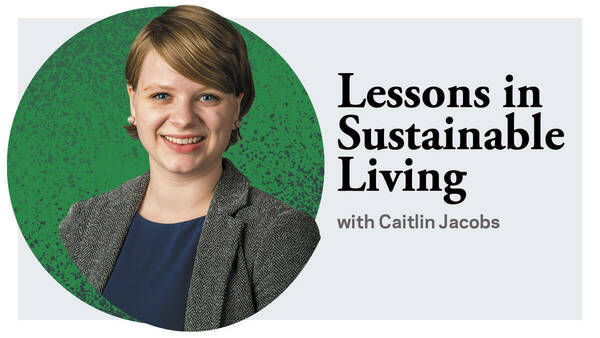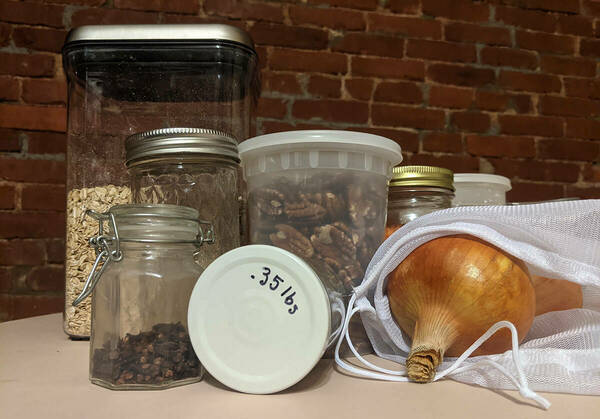

I’ve recommitted myself to reducing the packaging waste I create, which absolutely depends on my ability to be prepared when I leave the house instead of relying on the convenience of disposable items when I am out. In my kitchen, I keep a bin dedicated to the things I may need for a trip to the grocery store. This includes reusable shopping bags, reusable produce bags, waxed cloth food storage wraps and former jelly jars that I fill with pantry staples in the bulk aisle.
The bulk aisles at some grocery stores offer grains, flours, beans, coffee, spices, nut butters, nuts and seeds without the wasteful packaging. You buy what you need. I like to bring jars, fill them up with items I’m low on and then place them on the shelf in my pantry. Because you use the jars over and over again, there’s no waste. To make sure you don’t get charged for the weight of the jar, weigh the empty jar on a food scale and write that weight, called the tare weight, on the lid. When you go to checkout, the cashier will subtract the tare weight from the total weight and only charge you the difference. You pay for most bulk goods per ounce. My produce bags have the tare weight on the tag.
What helps me: ChicoBags and all of the above products; the bulk bins at Meijer, Whole Foods and Purple Porch.
Caitlin Jacobs is the sustainability program manager in the Office of Sustainability. You can find more sustainable living ideas on the Vatican’s new Laudato Si' Action Platform.
Originally published by at ndworks.nd.edu on December 14, 2021.